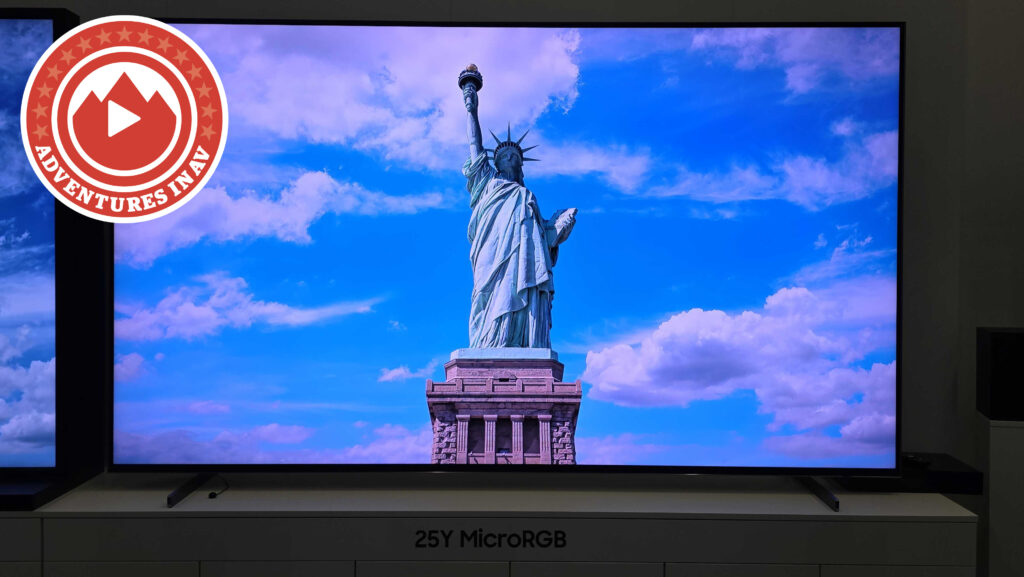
The European tech event of the year, IFA 2023, is underway in Berlin, and it has become the stage for a significant leap in television technology. Over the course of 24 hours, four major companies—Samsung, Hisense, TCL, and Sony—unveiled their next-generation RGB LED TVs, showcasing the capabilities of this new panel technology.
Samsung and Hisense are leading the charge with their massive 115-inch and 116-inch models, respectively. Meanwhile, TCL and Sony are taking more cautious approaches, with TCL focusing on its existing Mini LED range and Sony offering a glimpse of its future plans behind closed doors. The unveiling of these RGB LED TVs marks a pivotal moment in the evolution of display technology.
Revolutionizing Color Vibrancy
One of the most striking features of the new RGB LED technology is its ability to produce vibrant and rich colors. Samsung, Hisense, and Sony all demonstrated their models alongside traditional OLED and Mini LED displays. The difference was palpable, with the RGB LED models offering a color volume that made other technologies appear muted by comparison.
Sony’s prototype, in particular, captivated audiences with its luminous display of colors during a clip from Disney’s Frozen 2. Similarly, Hisense’s demonstration featured abstract content that highlighted the display’s capacity for vibrant hues, while Samsung’s 115-inch Micro RGB TV dazzled with a scene from Disney’s live-action Aladdin remake.
Addressing the Blooming Issue
Backlit TVs have long struggled with the issue of blooming, where bright subjects on dark backgrounds are surrounded by halos of light. RGB LED technology offers a clever solution by using individual red, green, and blue LEDs, allowing for more precise control and reducing the ghostly auras that have plagued backlit TVs.
Sony showcased this advancement with a clip from Marvel’s Black Widow, where a red light source was surrounded by a natural-looking red halo. Samsung’s Micro RGB TV also demonstrated impressive control over blooming, enhancing the immersive experience in a dark forest scene.
Challenging OLED’s Dominance
Historically, OLED has been the gold standard for achieving deep black levels in displays. However, RGB LED technology is poised to challenge this dominance. During the IFA demonstrations, Sony, TCL, and Hisense highlighted the impressive black depths their RGB LED TVs could achieve, rivaling OLED’s performance in this critical area.
While further side-by-side comparisons are necessary to fully assess the capabilities of RGB LED versus OLED, the early indications suggest that this new technology could be a game-changer in the industry.
The Road Ahead for RGB LED Technology
The introduction of RGB LED TVs by these four major manufacturers signals a significant shift in the television market. Although the technology is still in its early stages, the potential for widespread adoption is evident. Early adopters should be prepared for high price points, as these super-sized TVs are not yet mainstream.
However, as with previous technologies like Mini LED and OLED, it’s likely that RGB LED will become more accessible over time. As the technology matures and production scales up, consumers can expect to see more affordable options entering the market in the coming years.
Meanwhile, industry insiders are keenly observing how each manufacturer will refine and deploy this technology in their future lineups. The competition between these companies will likely drive further innovation and improvements in RGB LED technology.
As the IFA 2023 event continues, the excitement surrounding RGB LED TVs is palpable, and the implications for the future of television technology are profound. With each manufacturer taking a unique approach, the coming years promise to be an exciting time for tech enthusiasts and consumers alike.







